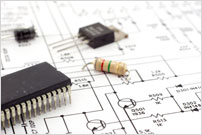November 2019 Issue
A summary of this month's contents.
Programmable GPS-synced Frequency Reference (Part 2)


This advanced lab-standard frequency reference is an ideal companion for frequency counters, oscilloscopes and spectrum analysers in the testlab. It's synchronised to the 1pps signal derived from a GPS module and has three BNC outputs with programmable frequencies from 1Hz – to 100MHz. The main oscillator is housed in a high stability temperature-controlled oven and its accuracy is around ±100ppb after 30 minutes.
In Part 2 this month, practical PCB construction is described followed by testing and setting up details.
![]() Surface mount design needs good soldering skills
Surface mount design needs good soldering skills
Using cheap Asian Electronic Modules (Part 20): Electronic compass modules
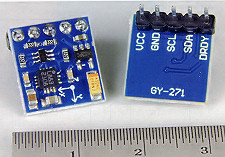
Two tiny 3-axis electronic compass modules – the Elecrow GY-271 and the GY-511 – are the subject of this month’s feature. You can use them with Arduino, Micromite or any other MCU that supports the I2C protocol and we provide all the necessary technical details to interface them.
Tinnitus & Insomnia Killer
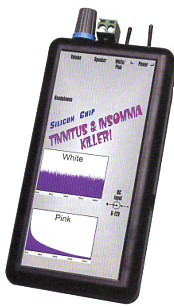 This device is capable of producing both white and pink noise, which is known to help suffers of tinnitus and insomnia.
This device is capable of producing both white and pink noise, which is known to help suffers of tinnitus and insomnia.
Based upon a specially programmed PIC12F617 microcontroller it forms a small portable unit that can drive headphones, earbuds or an external loudspeaker. It will also find applications in the audio test workshop.
All parts are mounted on a single PCB and full constructional details are included, along with more information about white and pink noise.
Colour MaxiMite Computer (Part 1)
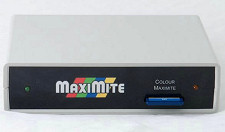 This project is a petite, self-contained mini computer with absolutely no need to tether it to a larger one. It’s designed to offer a non-intimidating modern twist on retro 80s-style computing that paved the way for the personal computer revolution all those years ago.
This project is a petite, self-contained mini computer with absolutely no need to tether it to a larger one. It’s designed to offer a non-intimidating modern twist on retro 80s-style computing that paved the way for the personal computer revolution all those years ago.
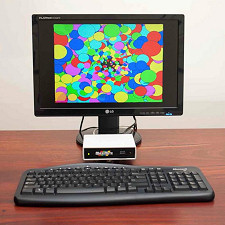
It’s a fabulous way to get into coding as well as being a satisfying project for retro home computer enthusiasts to build. Designed as a standalone unit, it’s guaranteed Internet-free!
The Colour MaxiMite Computer is based on a powerful PIC32 microcontroller running the easy to use MMBASIC language. It uses a standard VGA display, PS2 keyboard for input and an SD card for storage. It can connect to a PC/ Mac/ Linux host to control for programming via a VT100 compatible application. Its many features and benefits include:
- Self contained, DIY standalone computer
- Instant-on – ready to use the moment power is applied
- Uses a single, powerful 100-pin PIC32 MCU running at 80MHz
- Fully featured BASIC interpreter and programming language (MMBASIC).
- 512K Flash memory and 128KB RAM
- Up to 32GB full SD storage – FAT16 or FAT32 format
- Accepts Arduino shield internally
- Two, four and eight colour mode, 240 x 216 or 480 x 432 px.
- 40 I/Os including digital and analogue, freq and voltage measurements, serial/ UART, I2C , 1-wire
- Stereo sound
- High quality stereo music synthesiser to play MOD files.
Here’s an independent review of the MaxiMite - https://youtu.be/XQA8lowEKOo
![]() Some SMD soldering experience is required to build this project successfully.
Some SMD soldering experience is required to build this project successfully.
Using Stepper Motors (Part 2)
This special feature on the ins and outs of stepper motors continues with an in-depth guide to unscrambling the leads on 4,5,6 and 8-lead motors, with practical test routines also described.
Also in this issue
- Techno Talk - 'stretchable conductors' and the latest energy generation developments
- Net Work – surveillance, ANPR, AI facial recognition and ‘lip reading’
- Circuit Surgery – an introduction to how strain gauges work and differential signals
- PIC n’ MIX – a welcome return for our expert who continues exploring small cheap PICs
- Audio Out - practical woodworking for loudspeaker construction, and damping techniques
- Make it with Micromite – adding fonts, measuring temperature, saving files
- Max’s Cool Beans – work proceeds on Max’s Countdown Timer (see https://youtu.be/Cg83IxobFT8
- Electronic Building Blocks – four simple and cheap LED kits
Next month
Extremely Sensitive Magnetometer; "Useless Box" novelty; Stamp-sized digital audio player; Four-channel High current DC Fan and Pump Controller; The Colour MaxiMite Computer (Part 2).
Contents may be subject to change.
There’s more in PE than ever before! PE is packed with practical electronics projects and theory for the hobbyist. You can order a printed copy of PE for delivery to your door (worldwide), or try the PDF Version (needs Adobe Reader for Windows), or the Pocketmags for your mobile device. Subscribe now!
Source code file 1119.zip
[Circuit Surgery;
eCompass BASIC; GPS Freq Reference; MKC Clock; White Noise Generator]
PCB artwork
As from July 2013 issue PCB artwork is available free to subscribers only.
Non-subscribers may purchase artwork files for a nominal sum. Please contact our Orders Dept for information or to place an order.
EPE Printed Circuit Boards
We can supply ready-made printed circuit boards (8-digit order codes) to the original design specification via mail order or from our Online Shop.

